In the 1960s, Wally Funk passed NASA’s astronaut tests — beating most of the men in the Project Mercury program. But it took decades before she was ever allowed on a spaceship.
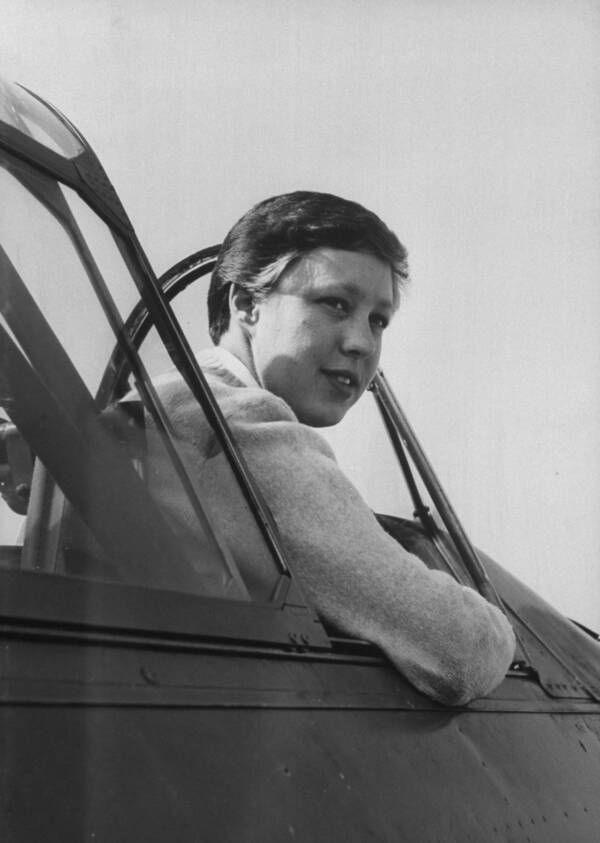
Don Cravens/Getty ImagesPilot Wally Funk sits in the cockpit of an AT-6 training plane.
In 1961, pilot Wally Funk donned a one-piece bathing suit and entered a pitch black isolation tank. The 22-year old had to show that she could withstand the remoteness of space. Wally wanted to prove that women could become astronauts in an era before NASA accepted female trainees.
To convince NASA, Wally knew she would need to outlast the Mercury astronauts. Rather than floating in a dark tank of water, the men sat in a dark room – with a pen and paper to keep them from getting bored. None of the men lasted longer than three hours.
The researchers behind the test assumed no one could withstand an isolation tank for more than six hours. The six-hour mark passed and Wally continued to float peacefully. Finally, the researchers pulled Wally from the tank as the pilot promised she could go longer.
Wally Funk broke the record – she floated, alone, for 10 hours and 35 minutes. But NASA never sent her to space. Instead, she had to find her own way — and flew to space with Jeff Bezos on his New Shepard rocket on July 20, making her the oldest person to ever cross the threshold of Earth’s gravity.
Wally Funk Knew She Would Be A Pilot Young
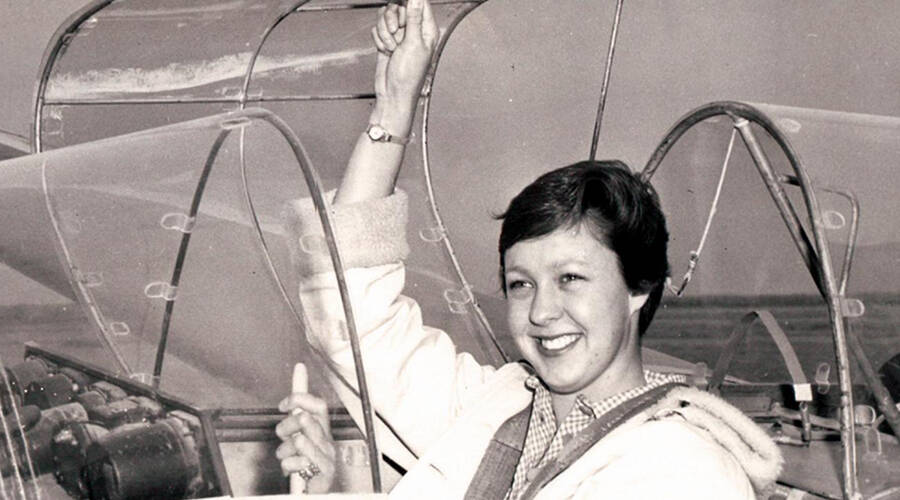
Wally FunkWally Funk took her first flying lesson at age nine.
Born Mary Wallace Funk in 1939, Wally began her flying career early. As a baby, Wally Funk grabbed a Douglas DC-3 airliner by the wheel. Wally’s parents had brought their one-year-old to an airport in New Mexico.
“I go right to the wheel and I try to turn the nut,” Wally said. Her mother declared, “She’s going to fly.”
At seven, Wally was building balsa wood planes. She climbed into the cockpit for her first flying lesson at nine. As a teenager, Wally earned her flying license. She chose Oklahoma State University for college so she could fly on the aviation team.
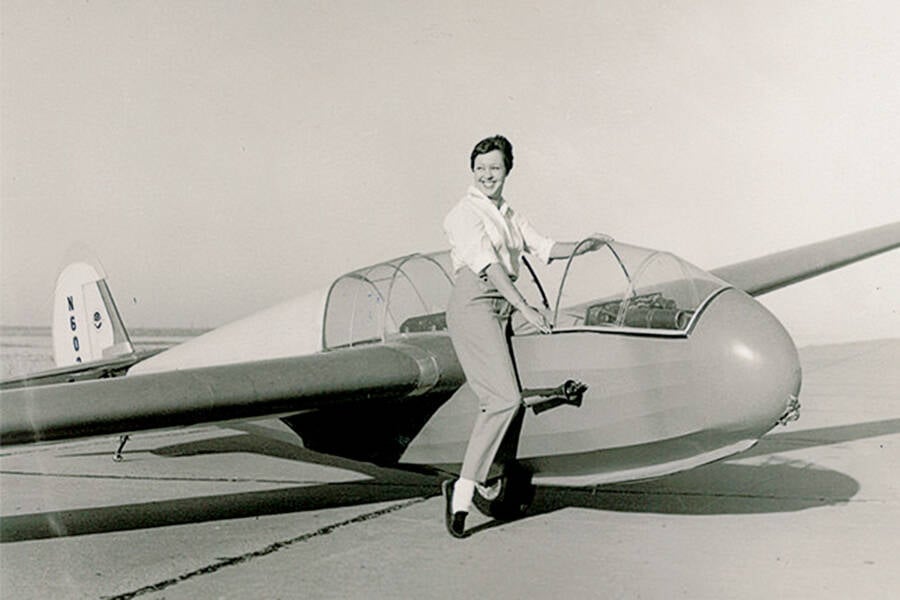
Wally FunkWally Funk next to a glide plane, c. 1960.
After graduation, Funk became the only female aviation instructor at a U.S. military base.
“I did everything that people didn’t expect a girl to do,” Wally said. “There was nothing I couldn’t do.”
One day, Funk picked up a copy of Life magazine. An article profiled Jerrie Cobb, a female pilot undergoing NASA’s astronaut tests. The article was called, “A Lady Proves That She’s Fit for Space Flight.”
Wally devoured the profile and knew she had to join the “lady astronaut” trainees.
Wally Funk Joins NASA’s Female Astronaut Trainees and “Mercury 13”
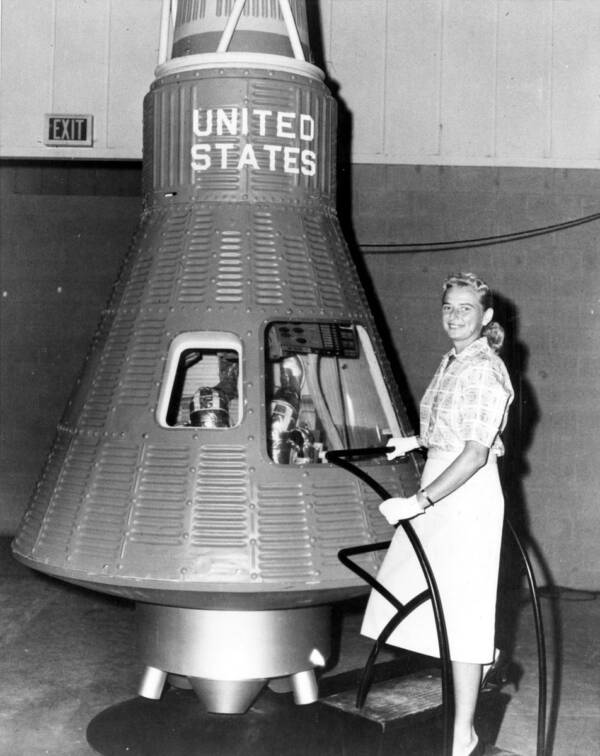
NASAJerrie Cobb poses next to a Mercury space capsule.
Wally Funk didn’t wait for an invitation from the female astronaut trainees program. She wrote directly to the researcher behind the study, Randy Lovelace. Lovelace had designed NASA’s astronaut tests and decided, on his own, to see whether women might make better astronauts than men.
In 1961, Lovelace invited the 22-year-old pilot to join the study. Wally dropped everything and rushed to Albuquerque.
The first round of exams included x-rays, intrusive physical exams, and a test where Wally had to swallow three feet of rubber tubes. The researchers also shot ice water into Wally’s ears to induce vertigo.
Wally didn’t complain – she wanted to go to space.
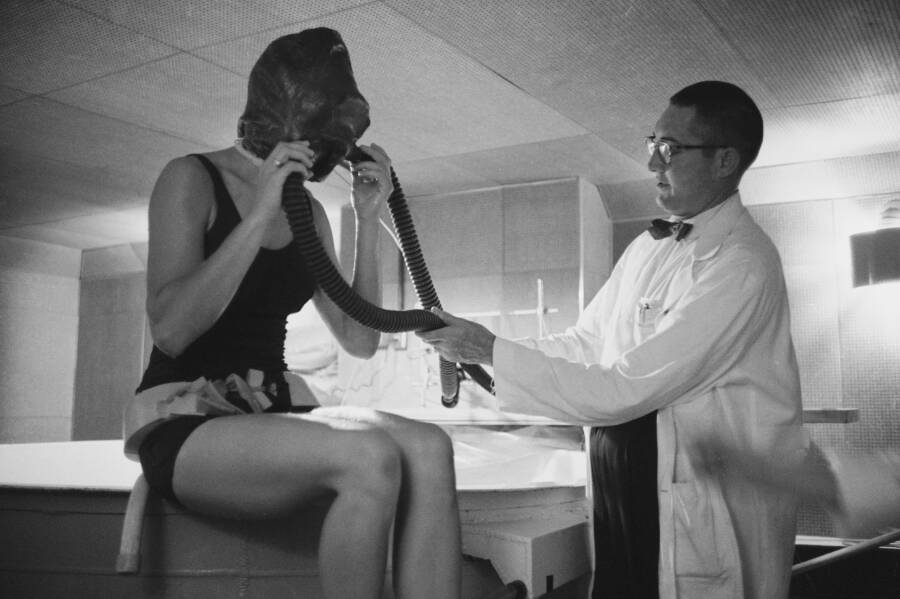
Carl Iwasaki/Getty ImagesIn 1961, Wally Funk underwent multiple tests of her physical fitness to prove that women could be astronauts.
“Not only did they poke needles in me all the time, but tubes were poked down me and stuck up me,” Funk remembers. “For what reason, I have no idea.”
A few months after passing the first round, Wally traveled to Oklahoma City for round two. That’s where she entered the isolation tank. When she emerged, the researchers asked, “Do you still want to go to space?” Wally said yes.
Ultimately, Wally and twelve other women passed the same tests used by NASA’s male astronauts. They became known as the Mercury 13.
But NASA refused to allow women into the space program. Wally and the other female astronauts had to sit on the sidelines while the Soviets sent the first woman to space in 1963.
NASA Didn’t Allow Women To Be Astronauts Until The 1970s
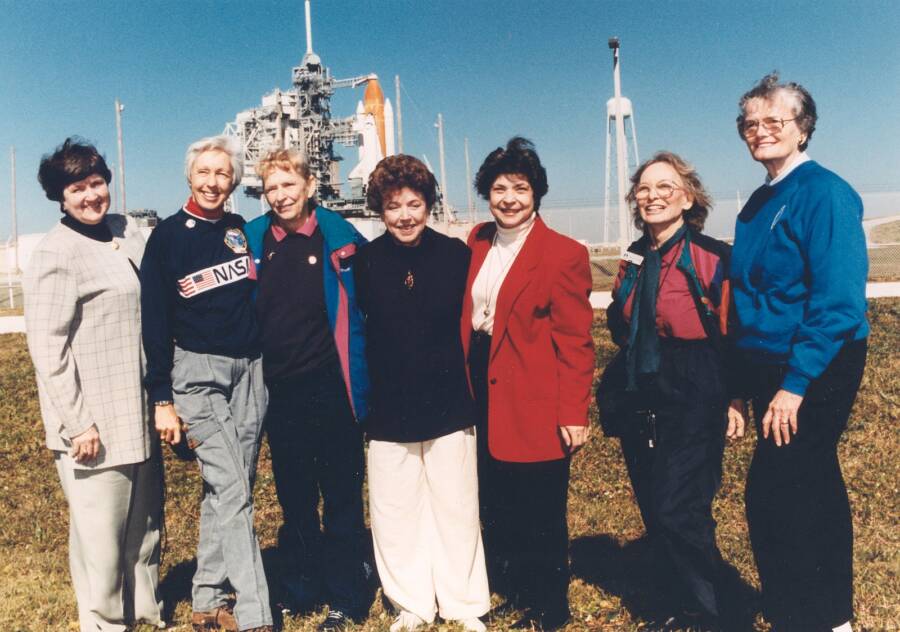
NASASeven members of the Mercury 13 watching a 1995 shuttle launch. From left: Gene Nora Jessen, Wally Funk, Jerrie Cobb, Jerri Truhill, Sarah Rutley, Myrtle Cagle, and Bernice Steadman.
NASA did not admit women to its astronaut training program until 1978. When the space agency announced the new policy, Wally decided she wasn’t too old to go to space.
In her early 40s, Wally applied to the training program four times. But NASA rejected Wally again.
This time, it wasn’t Wally’s gender that held her back. NASA required astronauts to hold an engineering degree. Funk’s bachelor’s degree didn’t meet the requirements. And when she tried to enroll in an engineering program, Wally was told, “You’re a girl – go to home ec.”
So instead, Wally devoted herself to her career in aviation. She became the first female safety inspector for the Federal Aviation Administration and continued to rack up flight hours, topping out at more than 19,000 hours.
Wally also continued to work as a flight instructor, training hundreds of people to operate planes.
In 1983, Wally watched as Sally Ride became the first American woman in space. And in 1995, Eileen Collins became the first woman to command a shuttle mission. Collins invited seven of the Mercury 13 women to the launch.
“Higher, faster, longer – that is my motto,” said Wally. “I can go out there and do anything.”
Wally Funk In The 21st Century
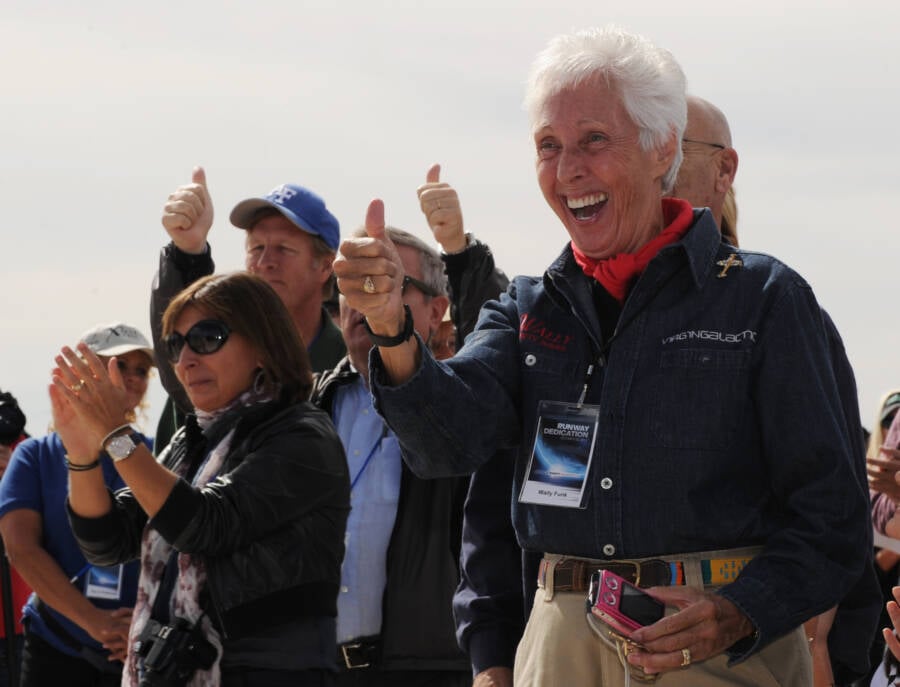
Mark Ralston/AFP via Getty ImagesWally Funk pictured at a ceremony in Las Cruces, New Mexico for the first landing of the Virgin Galactic VSS Enterprise, October 22, 2010.
Wally Funk never gave up on her dream of going to space. In the 2010s, she bought a ticket on Virgin Galactic’s SpaceShipTwo. Wally spent years picturing herself as an astronaut – even imagining takeoff.
“At takeoff, I’ll be sitting way back in my seat, and I’ll see things going by me,” Wally explained. “And then we get up to about ten thousand feet or forty thousand feet and climbing . . . And then we get into weightlessness, and we’re floating.”
Then, in July 2021, Jeff Bezos invited 82-year-old Wally Funk to join him on a Blue Origin launch. More than 60 years after passing her astronaut training tests, Wally would finally go to space.
Bezos asked Funk what she would do when she stepped out of the module after fulfilling her lifelong dream of becoming an astronaut, Wally answered, “I would say, ‘Honey, that was the best thing that ever happened to me!'”
“I can’t tell people that are watching how fabulous I feel to have been picked by Blue Origin to go on this trip,” Funk said in an announcement video. “I’ll love every second of it.”
And shortly before 9:15 a.m. Eastern Daylight Time on Tuesday, July 20, 2021, Wally Funk departed from the Earth in West Texas. In minutes, the New Shepard passed the 62-mile threshold that is considered the edge of space, before safely touching back down.
Wally Funk and the Mercury 13 fought for a role in the space race. Next, read about Jerrie Cobb, the pilot who led the Mercury 13, and then learn about Sally Ride, the first American woman in space.





